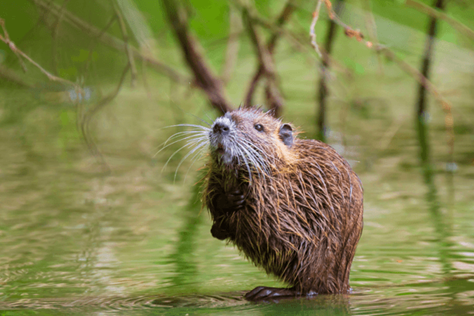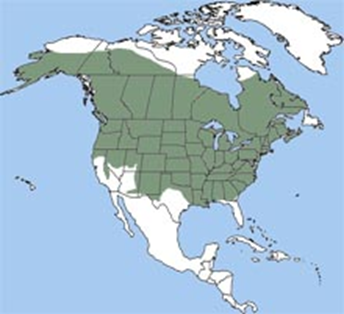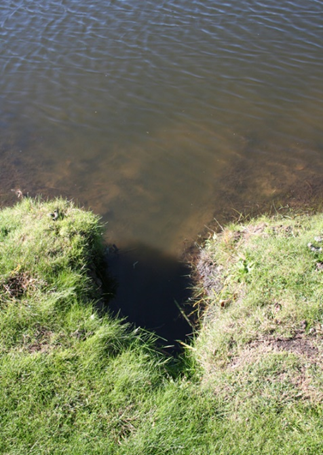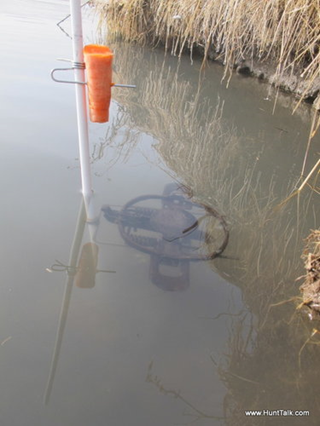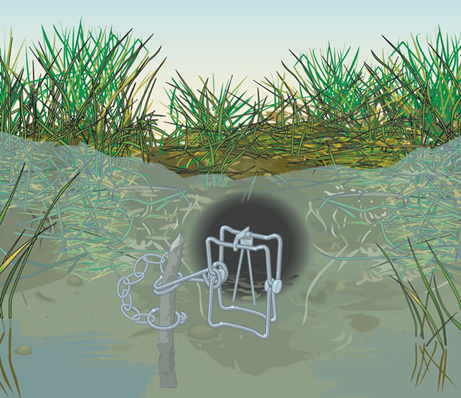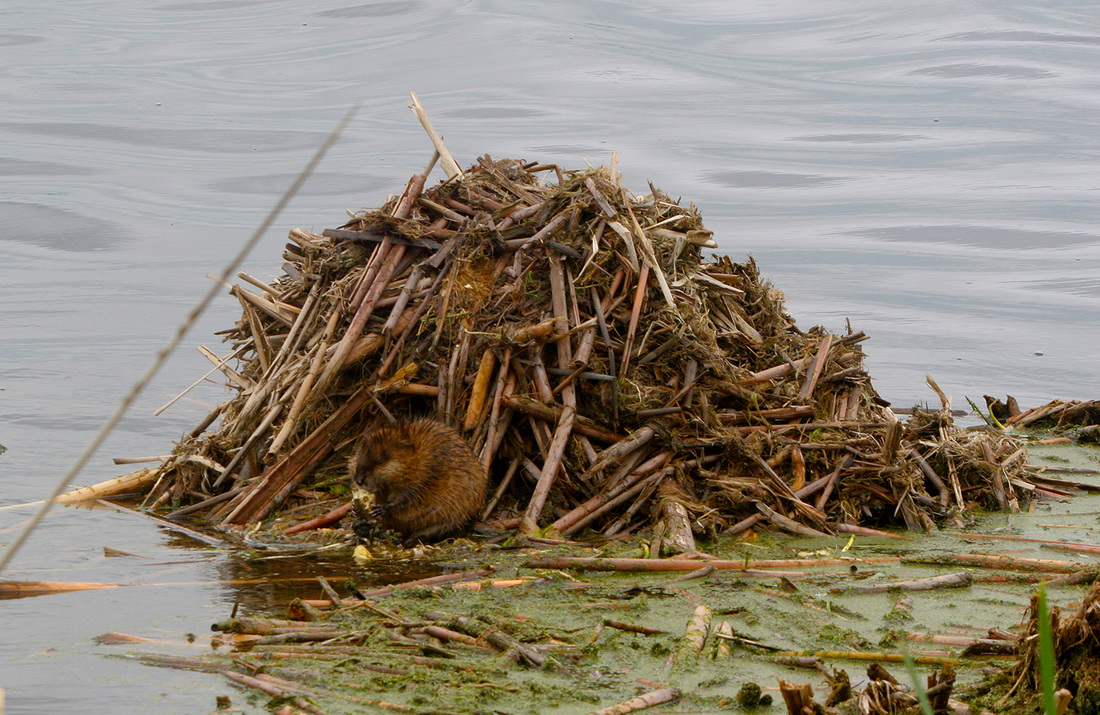Identification
- Muskrats have a stocky appearance with small eyes and very short, rounded ears. Their front feet, which are much smaller than the hind feet, are adapted primarily for digging and feeding. The large hind feet are partially webbed with stiff hairs along the toes, and the flattened tail is almost as long as the body. Most muskrats range from 18 - 24 inches in length, though some larger males will reach a length of 30 inches. Their body weight ranges from 1 1/2 lb. to over 4 lb. A range of colors is seen; generally, muskrats are tan to dark brown or even black, with lighter-colored belly fur.
